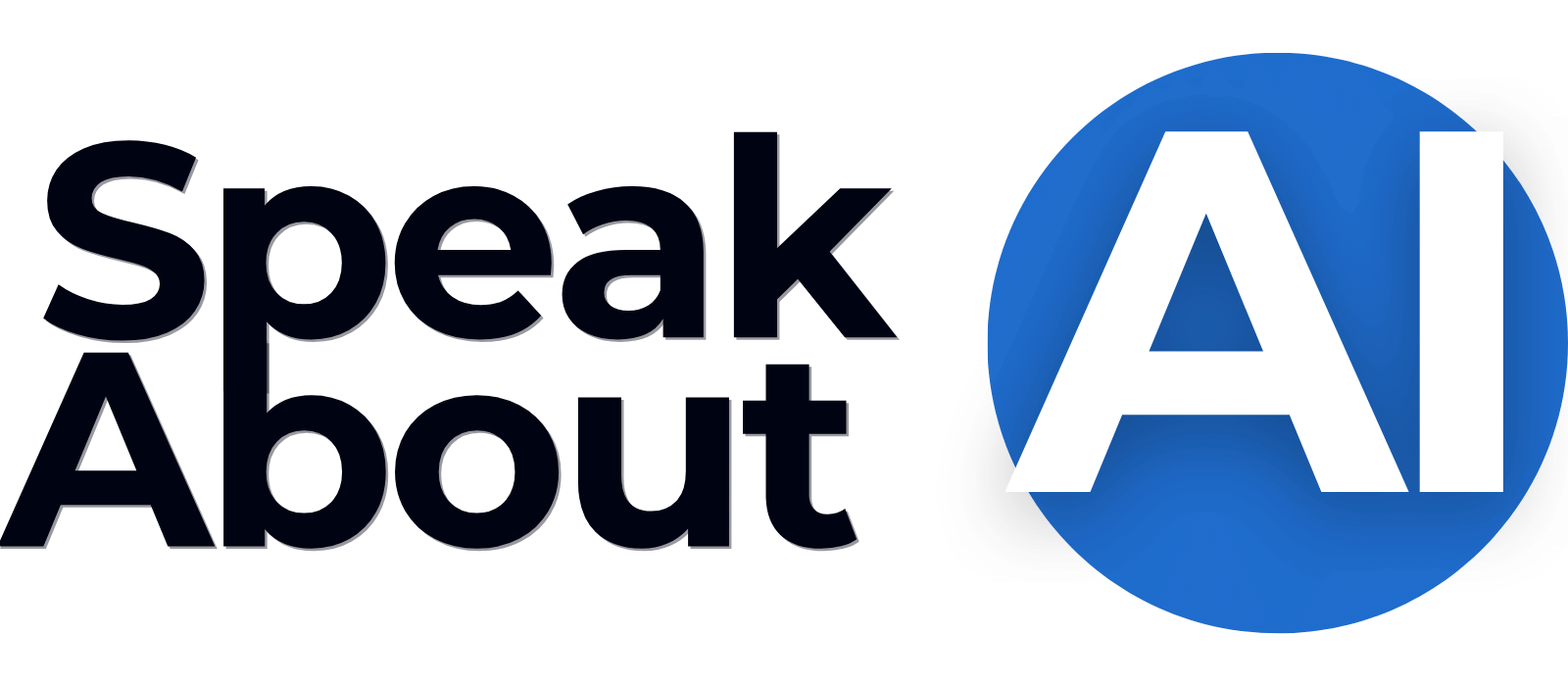10 Proven Competitive Advantage Strategies for 2025

In a fiercely competitive global market, simply having a great product isn't enough. True market leadership comes from building a sustainable edge: a unique position that competitors find difficult to replicate. This requires moving beyond generic advice and implementing proven competitive advantage strategies tailored to your organization's unique strengths and goals.
While these concepts are foundational, their modern application is more critical than ever. As leading innovation speakers on our roster often emphasize, technology is not a strategy in itself, but a powerful enabler of these timeless principles. Understanding how to apply new tools is essential, as detailed in events focused on AI for scaling and gaining competitive advantage. This guide will break down 10 distinct strategies, offering actionable insights and real-world examples to help you identify and cultivate your unique market position.
We'll explore how to leverage everything from operational efficiency and brand purpose to network effects and strategic partnerships. This article provides a clear framework to help you outmaneuver the competition, secure customer loyalty, and achieve long-term success.
1. Cost Leadership Strategy
Cost leadership is one of the most powerful competitive advantage strategies, focusing on becoming the lowest-cost producer within an industry. This approach isn’t just about slashing prices; it’s about architecting a highly efficient business model that minimizes operational expenses. By achieving lower costs than rivals, a company can offer lower prices to attract price-sensitive customers or enjoy higher profit margins at competitive prices.

The core of this strategy lies in relentless operational optimization. Companies like Walmart and Southwest Airlines mastered this by revolutionizing their supply chains and operational models, respectively. They leverage economies of scale, technological innovation, and process simplification to drive down costs while maintaining a quality level that customers find acceptable.
How to Implement This Strategy
To effectively execute a cost leadership strategy, focus on systemic efficiencies rather than isolated cuts.
- Optimize Your Supply Chain: Negotiate favorable long-term contracts with suppliers, streamline logistics, and minimize inventory holding costs.
- Invest in Technology: Implement automation and advanced software to reduce labor costs, increase production speed, and minimize errors.
- Embrace Process Improvement: Continuously analyze and refine every business process, from manufacturing to customer service, to eliminate waste and inefficiency.
Key Insight: As renowned business strategist and speaker Dr. Kaihan Krippendorff notes, "Sustainable cost leadership is built on a foundation of operational excellence and a culture of continuous improvement." He emphasizes that a truly defensible low-cost position is difficult for competitors to replicate.
By building a lean, efficient operation, your organization can create a durable competitive advantage that fuels market share growth and profitability. This strategy is especially potent in markets with high price sensitivity and standardized products.
2. Differentiation Strategy
The differentiation strategy is one of the most effective competitive advantage strategies, centered on creating a unique product, service, or brand image that is highly valued by customers. This approach goes beyond features, focusing on quality, design, customer experience, or brand reputation to command a premium price. By offering something distinct and superior, a company can build intense customer loyalty and reduce direct price competition.

This strategy is about being different in a way that truly matters to your target audience. Companies like Apple and Tesla have mastered differentiation through superior design, technological innovation, and integrated ecosystems. They don't compete on price; they compete on a unique value proposition that customers are willing to pay more for, effectively creating their own market space.
How to Implement This Strategy
To execute a successful differentiation strategy, you must deeply understand your customers and relentlessly innovate to meet their unique needs.
- Invest in R&D and Innovation: Continuously develop unique features, proprietary technology, or superior quality that sets your offering apart.
- Build a Powerful Brand Story: Craft a compelling narrative that communicates your unique value and resonates emotionally with your target audience.
- Focus on Customer Experience: Design every touchpoint, from purchase to post-sale support, to be exceptional, memorable, and consistent with your brand promise.
Key Insight: Top innovation keynote speaker and former Head of Innovation at Disney, Duncan Wardle, explains that "the key to differentiation is finding the intersection between what you do best and what your customers value most." He highlights that true differentiation is built on a deep, empathetic understanding of customer needs.
By creating a product or service that is difficult to replicate, your organization can build a sustainable competitive advantage, foster brand loyalty, and achieve higher profitability. This strategy thrives in markets where customers value quality, design, and brand over the lowest possible price.
3. Focus/Niche Strategy
A focus or niche strategy is one of the most effective competitive advantage strategies for businesses that excel at serving a specific segment of the market. Instead of competing broadly, this approach involves concentrating all resources on a narrow target, such as a particular customer demographic, geographic area, or specialized product line. The goal is to serve this niche better than any competitor, creating deep loyalty and market dominance within that segment.
The power of this strategy comes from intimate customer knowledge. Companies like GoPro (action cameras) and Basecamp (project management for small teams) achieved success by deeply understanding and addressing the unique pain points of their target audience. They don't try to be everything to everyone; instead, they become the undisputed solution for a select group.
How to Implement This Strategy
To successfully execute a focus strategy, you must become an expert in your chosen niche and build a business model that caters specifically to it.
- Deeply Understand Your Niche: Conduct thorough market research to identify the unmet needs, behaviors, and values of your target customers.
- Build a Strong Community: Create brand advocates by engaging directly with your audience and fostering a sense of belonging around your product or service.
- Specialize Your Offerings: Tailor your products, customer service, and marketing messages to resonate perfectly with your narrow market segment.
Key Insight: As leading strategist and speaker Dr. Kaihan Krippendorff often advises, "The essence of strategy is choosing what not to do." A successful focus strategy requires forgoing other market segments to concentrate on achieving a unique and defensible position within a chosen niche.
By mastering a specific domain, your organization can build a powerful brand reputation and insulate itself from larger, more generalized competitors. This strategy is ideal for businesses that can identify and serve an underserved market segment with precision.
4. Innovation and R&D Excellence
Innovation and R&D Excellence is a competitive advantage strategy centered on creating superior products, processes, or business models that leave competitors behind. This approach involves a deep commitment to research and development, aiming to generate breakthrough solutions, pioneer new markets, or develop proprietary technologies. By consistently innovating, a company can set industry standards and command premium prices.
The core of this strategy is a culture that relentlessly pursues what's next. Companies like Google, Tesla, and Microsoft exemplify this, continuously pushing boundaries in software, electric vehicles, and cloud computing. They invest heavily in R&D not just as an expense but as the primary engine of their growth, creating a cycle of invention, market leadership, and profitability that is difficult for rivals to interrupt.
How to Implement This Strategy
To build a sustainable advantage through innovation, embed it into your organization's DNA.
- Foster a Culture of Experimentation: Create dedicated innovation teams and encourage a mindset where failure is viewed as a learning opportunity on the path to a breakthrough.
- Invest Strategically in R&D: Allocate a consistent percentage of revenue to research and development. This includes exploring disruptive technologies like AI, and for more insights, you can learn how to implement AI in your business.
- Build an Innovation Ecosystem: Collaborate with universities, startups, and research institutions to access new ideas and talent, and use structured frameworks like a stage-gate process to manage the innovation pipeline.
Key Insight: As top innovation speaker Duncan Wardle emphasizes, cultivating creativity is key to a sustainable innovation pipeline. His workshops teach that practical tools and techniques can unlock the inventive potential within any team, making innovation a repeatable process rather than a random act.
By prioritizing innovation, your organization can create unique value that is hard to copy. This strategy is essential for companies in fast-evolving industries like technology, pharmaceuticals, and automotive, where staying ahead of the curve is critical for survival and success.
5. Brand and Reputation Excellence
Brand and reputation excellence is one of the most enduring competitive advantage strategies, focusing on building powerful brand equity that commands customer loyalty and market influence. This approach moves beyond products or services to create an emotional connection with consumers. By delivering on a consistent promise of quality and aligning with customer values, a strong brand can justify premium pricing and insulate a company from commoditization.

The essence of this strategy is trust. Iconic brands like Nike, Coca-Cola, and Disney have invested decades in building a reputation that transcends their physical products. Nike doesn't just sell shoes; it sells motivation through its 'Just Do It' mantra. Similarly, Patagonia's success is deeply intertwined with its authentic commitment to environmental values, creating a loyal tribe of followers who share its ethos.
How to Implement This Strategy
To build a powerful brand, you must cultivate it with purpose, consistency, and a deep understanding of your audience.
- Define Your Brand Purpose: Clearly articulate your mission, vision, and core values. This purpose should guide every decision your company makes.
- Ensure Consistency Across All Touchpoints: From marketing campaigns and packaging to customer service interactions, every touchpoint must reinforce your brand identity.
- Invest in Customer Experience: A great brand promise is validated by an exceptional customer experience. Make every interaction memorable and positive.
- Build Authentic Brand Stories: Use storytelling to communicate your values and connect with customers on an emotional level, creating a narrative they want to be part of.
Key Insight: Branding visionary and keynote speaker Seth Godin argues that trust and loyalty are earned, not bought. He champions the idea that effective brands deliver "anticipated, personal and relevant messages to people who actually want to get them," building a relationship based on permission and value.
Building brand excellence creates a protective moat that is difficult for competitors to cross. It is particularly effective in markets where trust, emotional connection, and perceived quality are key drivers of purchasing decisions.
6. Superior Customer Service and Experience
Creating a competitive advantage through superior customer service and experience involves building a business culture that consistently exceeds customer expectations. This strategy focuses on generating deep loyalty, positive word-of-mouth, and reduced customer churn. By delivering an exceptional experience, a company can often justify premium pricing and create a brand reputation that is difficult for competitors to replicate.
The foundation of this strategy is a genuine commitment to customer satisfaction at every touchpoint. Companies like Zapppos and Nordstrom have become legendary by empowering their employees to do whatever it takes to make customers happy. This principle, often highlighted by customer experience speakers, proves that a consistent, high-quality service model is a powerful differentiator.
How to Implement This Strategy
To effectively build a service-oriented advantage, you must embed customer-centricity into your company's DNA.
- Empower Your Employees: Give your team the autonomy and training to resolve customer issues on the spot without needing layers of approval.
- Invest in CRM and Feedback Systems: Use technology to understand your customers' needs and systematically collect feedback to drive continuous improvement. For deeper insights, learn more about customer experience optimization on speakabout.ai.
- Create Emotional Connections: Move beyond transactional interactions to build genuine relationships. To truly stand out, businesses must prioritize and deliver exceptional service, understanding the paramount importance of excellent customer service in building loyalty.
Key Insight: Customer experience expert and speaker Dennis Snow, who spent 20 years at Walt Disney World®, asserts that "everything speaks." He teaches that every detail, from employee attitudes to the cleanliness of a facility, communicates a message to the customer and contributes to a culture of service excellence.
By prioritizing the customer experience, your organization can build a loyal following that is less sensitive to price and more resistant to competitive offers. This is one of the most sustainable competitive advantage strategies available.
7. Network Effects and Platform Strategy
The network effects strategy creates a powerful competitive advantage where the value of a product or service increases as more people use it. This creates a self-reinforcing cycle of growth and a formidable barrier to entry for competitors. The more participants join the network, whether it's a social platform or a two-sided marketplace, the more indispensable it becomes, leading to high switching costs for users.
This model is the engine behind many of today's tech giants. Uber connects more riders with more drivers, reducing wait times and increasing value for both sides. Similarly, LinkedIn becomes a more potent career tool with every new professional who joins. These platforms build deep, defensible moats not just through technology, but through the vibrant ecosystems they cultivate.
How to Implement This Strategy
Building a successful platform requires overcoming the initial "chicken-and-egg" problem to achieve critical mass.
- Solve the Chicken-and-Egg Problem: Offer subsidies, exclusive content, or single-player utility to attract an initial user base on one side of the market before scaling the other.
- Build Community Features: Foster engagement and interaction between users to strengthen network bonds and increase the platform's stickiness.
- Create Barriers to Exit: Develop lock-in features such as user history, reputation scores, or integrated tools that make leaving the platform inconvenient.
Key Insight: As platform strategy speakers often highlight, the initial phase is about manufacturing value before the network can generate it organically. Successfully subsidizing one side of the market or creating a standalone tool is crucial for reaching the tipping point where network effects take over.
By focusing on cultivating a valuable and engaged user base, your organization can build one of the most durable competitive advantage strategies available. This approach is ideal for businesses that can connect distinct user groups in a digital ecosystem.
8. Operational Excellence and Efficiency
Operational excellence is a competitive advantage strategy centered on refining systems and processes to create a highly efficient and reliable business model. This goes beyond simple cost-cutting; it involves cultivating a culture of continuous improvement to deliver superior products and services consistently and efficiently. By streamlining operations, a company can achieve lower costs, faster delivery times, and higher quality, creating a powerful value proposition that is difficult for rivals to replicate.
The core of this strategy is embedding efficiency into the company's DNA. Toyota pioneered this with its lean manufacturing system, while FedEx built its entire brand on logistical precision. These companies demonstrate how mastering internal processes translates directly into a market-leading position. This is one of the most durable competitive advantage strategies as it requires deep organizational change.
How to Implement This Strategy
To build operational excellence, focus on systematic process improvement and cultural alignment.
- Implement Proven Methodologies: Adopt frameworks like Lean or Six Sigma to identify waste, reduce process variation, and enhance quality.
- Map and Optimize Processes: Document every critical workflow to find bottlenecks and opportunities for improvement, from production to customer service.
- Invest in Automation: Leverage technology to automate repetitive tasks, reduce human error, and free up employees for higher-value activities. Exploring successful digital transformation strategy examples can provide a roadmap for this.
Key Insight: Speakers on operational excellence frequently echo the principles of continuous improvement (kaizen). They emphasize that the goal is not a one-time project, but fostering a culture where every employee is empowered to make small, incremental improvements consistently across the entire organization.
By focusing on how work gets done, your organization can build a formidable competitive moat based on efficiency, speed, and reliability that customers value and competitors struggle to match.
9. Strategic Partnerships and Ecosystem Building
Strategic partnerships and ecosystem building create a competitive advantage by combining complementary strengths. Instead of relying solely on internal capabilities, this strategy leverages alliances with other organizations to expand market reach, access new technologies, and create integrated solutions that are difficult for competitors to replicate. By building a network of interconnected partners, a company can create a powerful ecosystem that delivers superior value to customers.
The core of this strategy is symbiotic value creation. Companies like Microsoft and Apple have mastered this by fostering vast ecosystems of software developers, hardware manufacturers, and content creators. These partnerships make their platforms more valuable and create high switching costs for customers, locking them into a rich, interconnected environment that a single company could not build alone.
How to Implement This Strategy
To effectively build a partnership-driven competitive advantage, focus on mutual growth and clear governance.
- Select Aligned Partners: Identify organizations whose goals, values, and customer bases complement your own. Strategic alignment is the foundation for a successful long-term alliance.
- Define a Clear Value Proposition: Articulate what each partner brings to the table and what you will achieve together. This clarity ensures all parties are motivated and working toward a common goal.
- Establish Strong Governance: Create clear rules of engagement, communication protocols, and conflict resolution mechanisms to manage the partnership effectively.
Key Insight: "In an era of hyper-connectivity, the most resilient organizations are not monolithic giants, but hubs within powerful ecosystems," notes renowned business strategist Dr. Kaihan Krippendorff. He stresses that true competitive advantage strategies today often lie in the network you build, not just the product you sell.
By cultivating a thriving ecosystem, your organization can innovate faster, reach new markets, and create a powerful barrier to entry that insulates you from competitive threats. This approach is particularly effective in technology, software, and complex service industries.
10. Sustainability and Purpose-Driven Strategy
A purpose-driven strategy builds a competitive advantage by embedding environmental, social, and governance (ESG) principles into the core of the business. This approach moves beyond profit-centric models to attract conscious consumers, dedicated employees, and long-term investors. By authentically committing to sustainability and social responsibility, companies can enhance brand reputation, mitigate risks, and uncover new operational efficiencies.
The essence of this strategy is authentic integration, not just marketing. Companies like Patagonia and Tesla have built powerful brands around their environmental missions, making it a core part of their product and identity. Similarly, Unilever's Sustainable Living Plan demonstrated that a commitment to social and environmental goals could drive significant, profitable growth across a global portfolio.
How to Implement This Strategy
To effectively build a purpose-driven competitive advantage, your commitment must be genuine and transparent.
- Align Purpose with Core Strategy: Integrate sustainability goals directly into your business model, ensuring they influence product development, operations, and market positioning.
- Set Measurable Goals: Establish clear, auditable targets for your environmental and social impact, and transparently report on your progress and challenges.
- Engage All Stakeholders: Involve employees, customers, suppliers, and the community in your sustainability initiatives to build a shared sense of purpose and accountability.
Key Insight: As our roster of purpose-driven speakers often illustrates, a company's 'why' is its most powerful asset. They explain that in an increasingly transparent world, companies that lead with authentic purpose can build deeper, more resilient relationships with customers and employees that competitors find nearly impossible to replicate.
By embedding sustainability into your operational DNA, your organization can create a powerful and lasting competitive advantage that resonates in today's socially conscious marketplace. This strategy is particularly effective for brands targeting younger demographics and those in industries with significant environmental or social footprints.
10-Strategy Competitive Advantage Comparison
| Strategy | Implementation complexity | Resource requirements | Expected outcomes | Ideal use cases | Key advantages |
|---|---|---|---|---|---|
| Cost Leadership Strategy | Medium–High (scale & process optimization) | High capital, supply‑chain & automation investment | Lowest-cost producer, higher volume share, margin via scale | Commoditized, price‑sensitive markets | Competitive pricing, market share growth, supplier leverage |
| Differentiation Strategy | High (R&D, design, brand) | Significant R&D, marketing, design and talent | Premium pricing, brand equity, customer loyalty | Premium segments, design/innovation‑driven markets | Pricing power, reduced price sensitivity, brand resilience |
| Focus / Niche Strategy | Low–Medium (targeted depth) | Moderate specialized expertise and targeted marketing | Strong loyalty within niche, higher margin per customer | Underserved segments, local or specialized product categories | Deep customer understanding, lower direct competition |
| Innovation & R&D Excellence | Very High (long horizon, complex projects) | Very high R&D budget, specialized talent, labs | Breakthrough products, patents, long‑term competitive moat | Tech, pharma, advanced manufacturing, disruptive markets | First‑mover advantage, IP protection, market leadership |
| Brand & Reputation Excellence | High (long-term, consistency required) | High marketing, PR, consistent quality controls | Premium pricing, customer trust, easier expansion | Consumer brands, lifestyle and trust‑based markets | Loyalty, crisis resilience, lower long‑term acquisition cost |
| Superior Customer Service & Experience | Medium–High (culture + systems) | High labor, training, CRM and service infrastructure | High retention, referrals, lower churn, premium positioning | Service industries, subscriptions, hospitality & retail | Customer loyalty, positive word‑of‑mouth, differentiation |
| Network Effects & Platform Strategy | Very High (ecosystem orchestration) | Significant tech investment, user acquisition subsidies | Exponential growth if critical mass reached, strong moat | Marketplaces, multi‑sided platforms, data‑driven businesses | High stickiness, scalable network value, multiple revenue streams |
| Operational Excellence & Efficiency | Medium (process change & discipline) | Moderate investment in automation, lean tools, training | Lower operating costs, faster delivery, reliable quality | Manufacturing, logistics, large‑scale operations | Cost reduction, speed, consistent execution |
| Strategic Partnerships & Ecosystem Building | Medium–High (coordination & governance) | Moderate BD, legal, integration effort and shared investment | Expanded capabilities, faster market access, shared risk | Entering new markets, complementing capabilities, co‑development | Access to resources, faster innovation, extended reach |
| Sustainability & Purpose‑Driven Strategy | Medium (requires alignment & transparency) | Moderate–High investment in supply chain, reporting, initiatives | Brand differentiation, ESG investor appeal, risk mitigation | Consumer brands, regulated sectors, talent‑sensitive industries | Attracts conscious customers/employees, regulatory readiness, long‑term resilience |
Strategy | Implementation complexity | Resource requirements | Expected outcomes | Ideal use cases | Key advantages
| Cost Leadership Strategy | Medium–High (scale & process optimization) | High capital, supply‑chain & automation investment | Lowest-cost producer, higher volume share, margin via scale | Commoditized, price‑sensitive markets | Competitive pricing, market share growth, supplier leverage |
|---|---|---|---|---|---|
| Differentiation Strategy | High (R&D, design, brand) | Significant R&D, marketing, design and talent | Premium pricing, brand equity, customer loyalty | Premium segments, design/innovation‑driven markets | Pricing power, reduced price sensitivity, brand resilience |
| Focus / Niche Strategy | Low–Medium (targeted depth) | Moderate specialized expertise and targeted marketing | Strong loyalty within niche, higher margin per customer | Underserved segments, local or specialized product categories | Deep customer understanding, lower direct competition |
| Innovation & R&D Excellence | Very High (long horizon, complex projects) | Very high R&D budget, specialized talent, labs | Breakthrough products, patents, long‑term competitive moat | Tech, pharma, advanced manufacturing, disruptive markets | First‑mover advantage, IP protection, market leadership |
| Brand & Reputation Excellence | High (long-term, consistency required) | High marketing, PR, consistent quality controls | Premium pricing, customer trust, easier expansion | Consumer brands, lifestyle and trust‑based markets | Loyalty, crisis resilience, lower long‑term acquisition cost |
| Superior Customer Service & Experience | Medium–High (culture + systems) | High labor, training, CRM and service infrastructure | High retention, referrals, lower churn, premium positioning | Service industries, subscriptions, hospitality & retail | Customer loyalty, positive word‑of‑mouth, differentiation |
| Network Effects & Platform Strategy | Very High (ecosystem orchestration) | Significant tech investment, user acquisition subsidies | Exponential growth if critical mass reached, strong moat | Marketplaces, multi‑sided platforms, data‑driven businesses | High stickiness, scalable network value, multiple revenue streams |
| Operational Excellence & Efficiency | Medium (process change & discipline) | Moderate investment in automation, lean tools, training | Lower operating costs, faster delivery, reliable quality | Manufacturing, logistics, large‑scale operations | Cost reduction, speed, consistent execution |
| Strategic Partnerships & Ecosystem Building | Medium–High (coordination & governance) | Moderate BD, legal, integration effort and shared investment | Expanded capabilities, faster market access, shared risk | Entering new markets, complementing capabilities, co‑development | Access to resources, faster innovation, extended reach |
| Sustainability & Purpose‑Driven Strategy | Medium (requires alignment & transparency) | Moderate–High investment in supply chain, reporting, initiatives | Brand differentiation, ESG investor appeal, risk mitigation | Consumer brands, regulated sectors, talent‑sensitive industries | Attracts conscious customers/employees, regulatory readiness, long‑term resilience |
Choosing Your Path to Market Leadership
Navigating the complex landscape of modern business requires more than just a good product or service; it demands a deliberate and well-executed strategic position. Throughout this article, we’ve explored ten powerful competitive advantage strategies, from the foundational pillars of cost leadership and differentiation to the modern dynamics of network effects and purpose-driven initiatives. Each strategy offers a unique blueprint for carving out a defensible and profitable space in the market.
However, the true power of these concepts is not in understanding them in isolation. The most resilient and successful organizations rarely rely on a single approach. Instead, they skillfully blend multiple strategies into a cohesive whole. A company might leverage operational excellence to achieve cost leadership, then reinvest those savings into R&D to fuel an innovation strategy. Similarly, a strong brand reputation can amplify a superior customer service model, creating a cycle of loyalty that competitors find nearly impossible to break.
From Theory to Action: Your Strategic Next Steps
The critical takeaway is that choosing your core competitive advantage strategies is not a one-time decision but an ongoing commitment. It must be woven into your company's culture, reflected in your daily operations, and communicated clearly across every team. To begin this journey, consider these actionable steps:
- Conduct a Core Competency Audit: Objectively assess what your organization does best. Where do your unique skills, resources, and institutional knowledge lie? Align your primary strategy with these inherent strengths.
- Analyze Market Gaps and Customer Needs: Where are your competitors falling short? What unmet needs or frustrations exist within your target audience? A focus or differentiation strategy can thrive in these gaps.
- Evaluate Resource Allocation: Does your budget reflect your strategic priorities? If you aim for innovation excellence, your R&D and talent acquisition budgets must be protected. If customer service is your cornerstone, investments in training and support technology are non-negotiable.
The Decisive Factor: Expert Insight and Inspiration
Ultimately, achieving a sustainable competitive advantage is about making smarter, more informed decisions than your rivals. As technology, particularly artificial intelligence, continues to reshape every industry, understanding its impact is no longer optional. AI is not just another tool; it's a powerful accelerant for every strategy discussed, from optimizing supply chains for cost leadership to personalizing customer experiences for differentiation.
To truly harness this potential, your team needs more than just data; they need clarity, vision, and a tangible roadmap. Hearing directly from experts who are at the forefront of this technological revolution can provide that crucial spark. The right speaker can translate abstract concepts into practical, industry-specific applications, empowering your leaders to see new possibilities and inspiring your entire organization to execute with confidence. Mastering these competitive advantage strategies is the key to not just surviving, but thriving in the market of tomorrow.
Ready to transform your strategic planning sessions and inspire your team with cutting-edge insights? At Speak About AI, we connect you with leading experts and keynote speakers who can illuminate how artificial intelligence will shape your industry and amplify your competitive advantage. Visit Speak About AI to discover the perfect voice to guide your organization toward market leadership.
